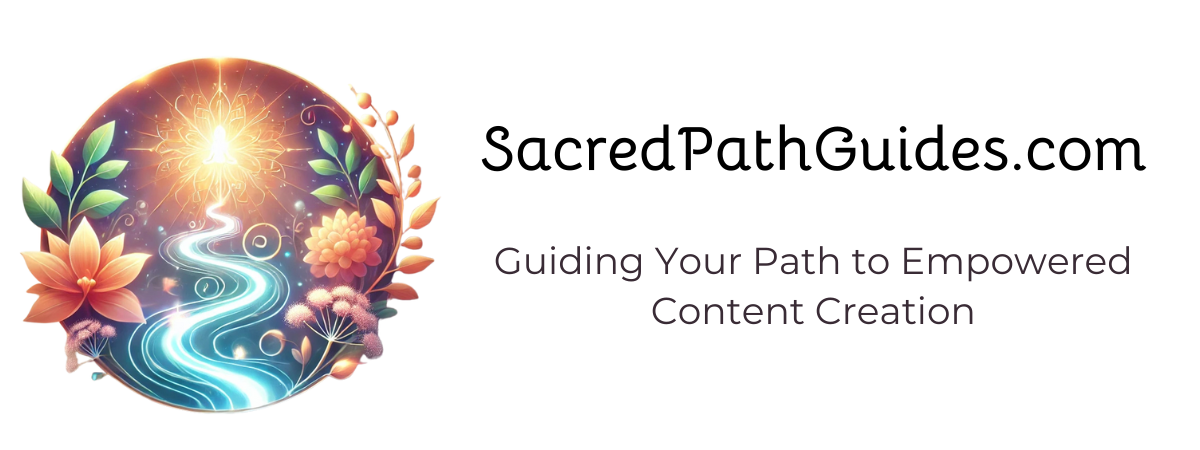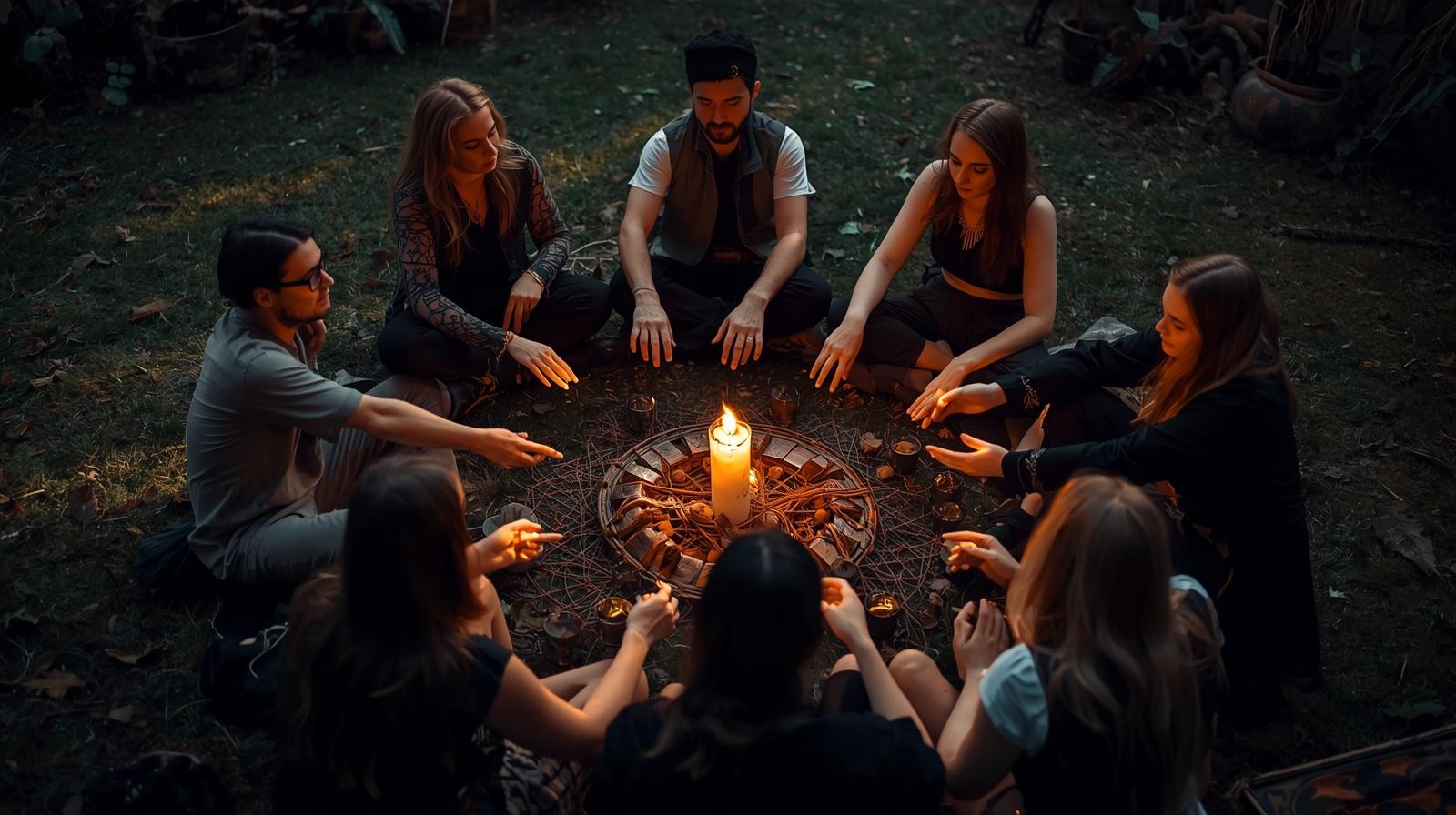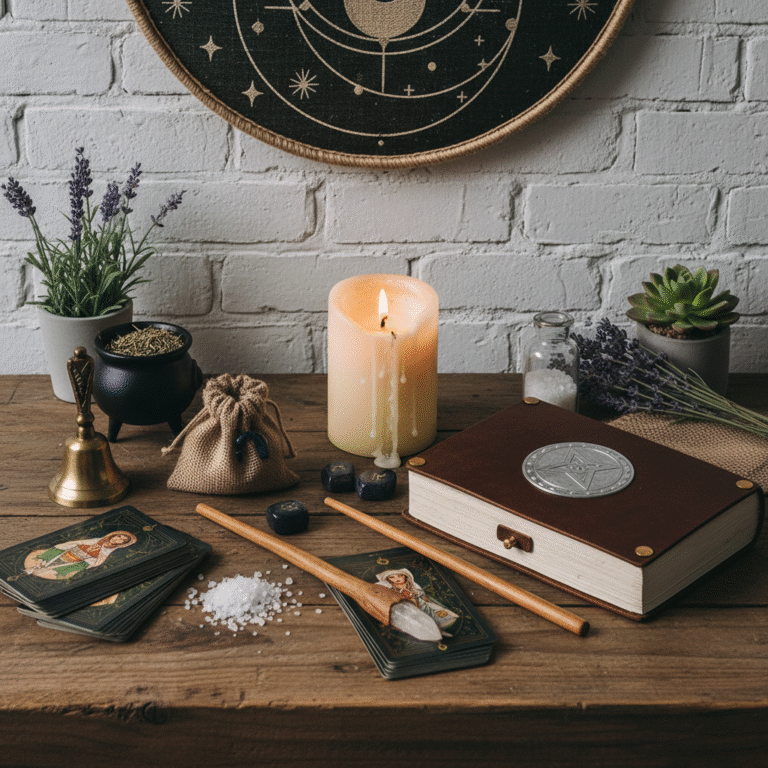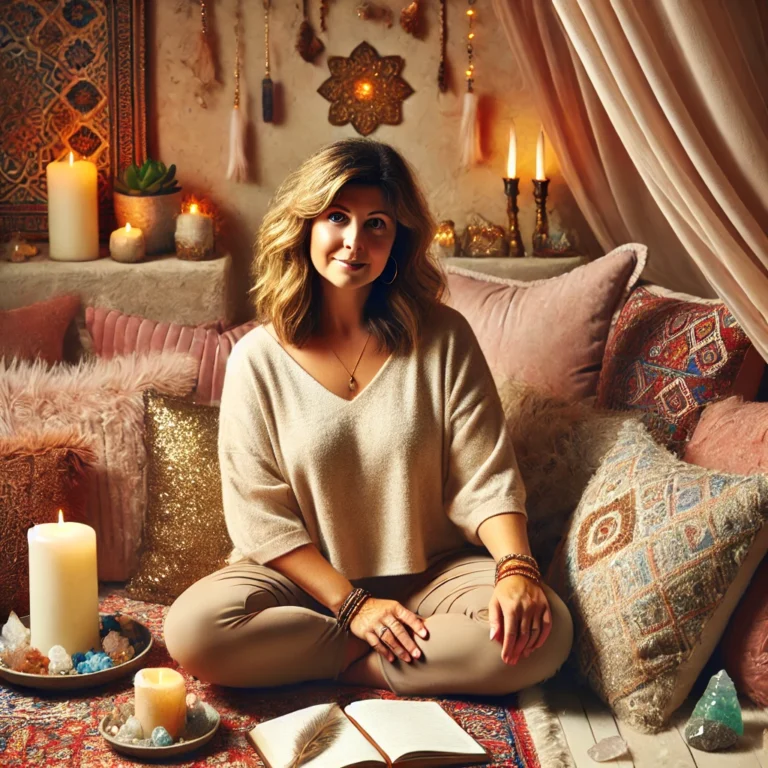Are These Witch Stereotypes True?
Say the word “witch” and watch what happens.
Disclosure: As an Amazon Associate I earn from qualifying purchases. I may earn commissions from links on this page.
Someone pictures a pointy hat. Someone else sees medieval bonfires. Your cousin thinks of TikTok moon water. Your aunt? Still worried about the devil.
With centuries of stereotypes stacked on top of each other, no wonder beginners get stuck asking: what’s actually real?
Let’s take the most persistent myths about witches and sweep them out the door.
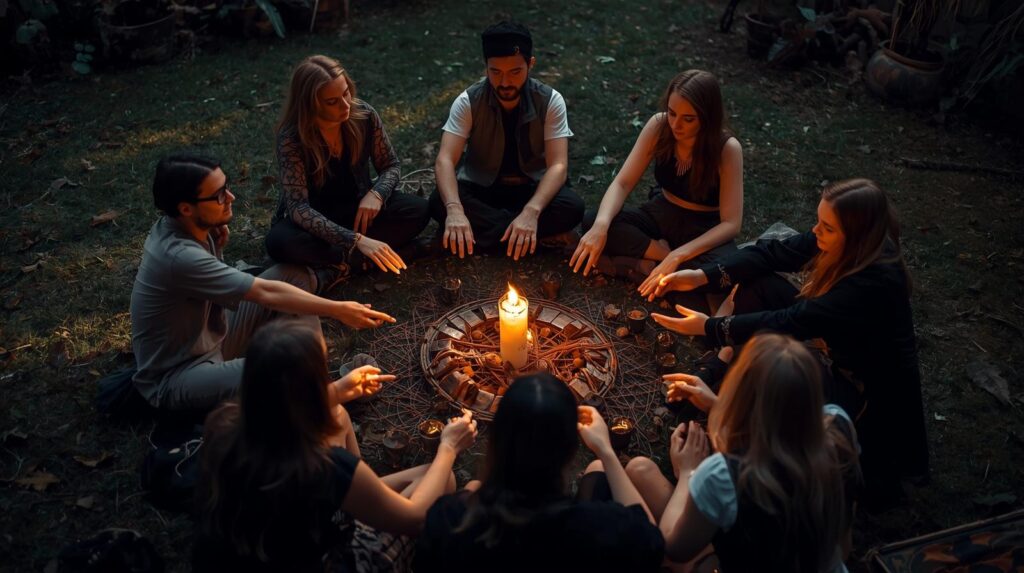
Myth 1: “Witches Worship the Devil”
This one comes straight from medieval Europe, where the church painted anyone practicing folk magic, herbalism, or midwifery as suspicious. If you didn’t fit the mold, you were dangerous. And “dangerous” meant “demonic.”
Here’s the truth: modern witchcraft isn’t tied to Satanism.
Some witches are religious. Some aren’t. Some follow Wicca, a nature-based path focused on cycles and balance. Others blend practices from their cultural roots or build eclectic systems that fit their lives.
The unifying thread? Intention and magic—not devil worship.
The devil is a Christian concept. Most witches don’t even work within that framework.
Myth 2: “Only Women Can Be Witches”
Yes, the word “witch” has historically been weaponized against women. But today? Witchcraft is for anyone.
Men practice. Nonbinary folks practice. People of all genders practice.
The craft doesn’t care what you look like or what pronouns you use. It cares about your practice. Your intention. Your connection to the work.
If someone tells you witchcraft has a gender requirement, they’re wrong.
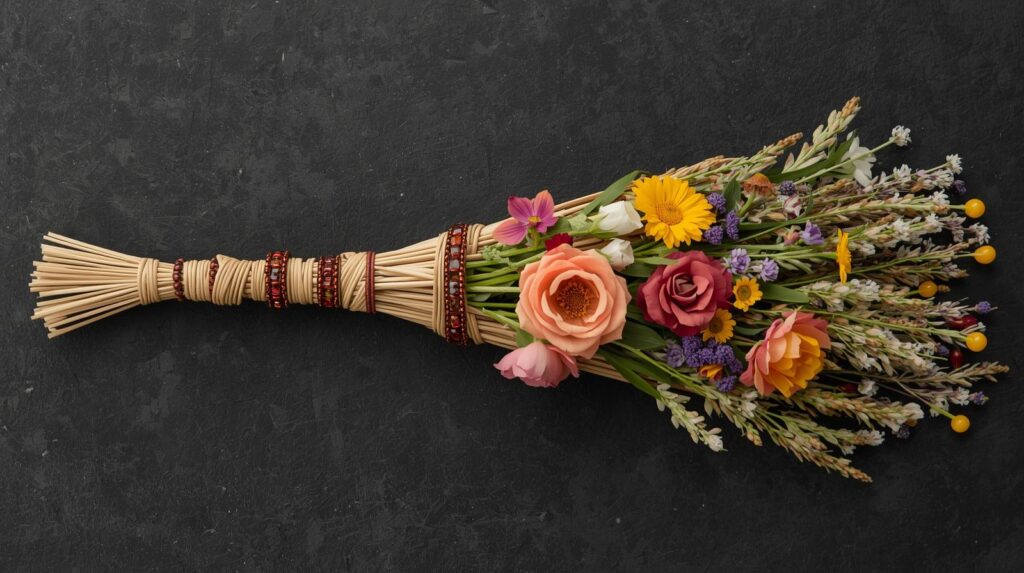
Myth 3: “Witches Ride Brooms and Cackle Over Cauldrons”
Fun imagery? Absolutely.
Reality? Not quite.
What the Broom (Besom) Actually Symbolizes
The broom does have magical use—it’s used to energetically sweep away negativity before rituals. You’re not riding it. You’re clearing space with it.
How Cauldrons Are Used Today
Cauldrons can hold offerings, burn herbs, or serve as symbolic vessels of creation and transformation. They’re practical tools, not props for a Hollywood set.
No one’s blasting off across the night sky. But yes, the symbolism is real—and useful.
Myth 4: “Witchcraft Is Evil or Dangerous”
This myth has been repeated for hundreds of years, so it’s dug in deep.
But here’s what modern witches actually focus on: self-growth, protection, healing, and connection.
Most witches aren’t hexing their neighbors for bad parking spots. They’re journaling. Setting boundaries. Working through grief. Building rituals that help them feel grounded.
Are there witches who practice baneful magic? Yes. Just like there are people in every community who work with heavier energies or shadow work.
But the stereotype that “witch = evil” is outdated and flat-out wrong.
Witchcraft is a tool. Like any tool, it depends on how you use it—and why.
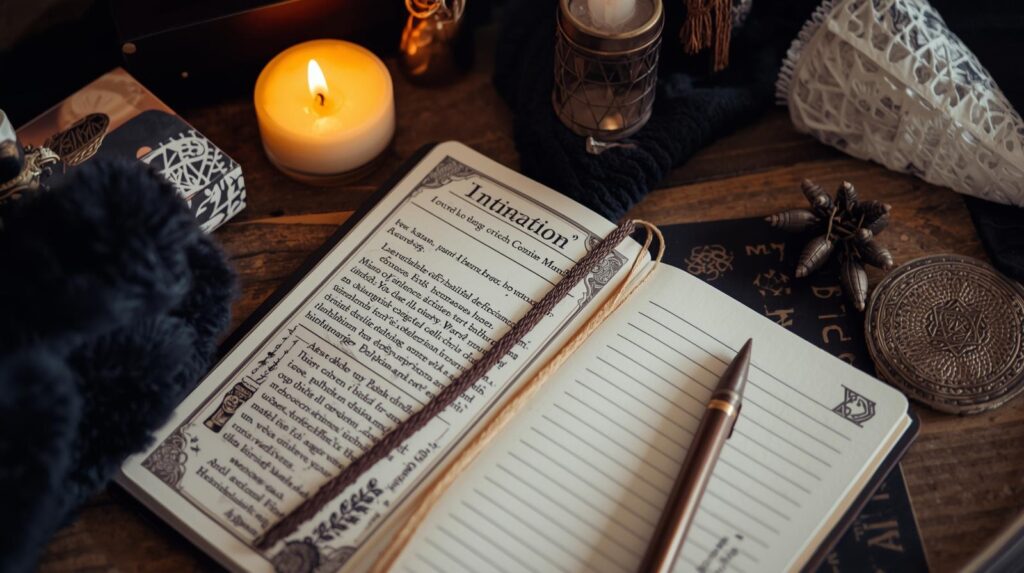
Myth 5: “You Need Expensive Tools to Be a Real Witch”
False.
Witches have always used what’s available. Salt. Candles. Kitchen spices. Rocks from the yard.
Tools are meant to focus intention, not prove legitimacy.
A $2 tealight from the grocery store can be just as powerful as a $40 artisan candle—if you use it with intention.
You don’t need a crystal collection that costs more than your rent. You don’t need rare herbs shipped from across the world.
You need focus. You need intention. The rest is optional.
Myth 6: “Real Witches Must Practice in Secret, Alone”
The “lonely hedge witch” makes great folklore. But in reality, witchcraft today is about choice.
Solitary practice is common—and valid. But community is thriving too. Online groups. Local circles. Seasonal gatherings. Discord servers. Monthly rituals with friends.
You can practice alone, in groups, or a mix of both. There’s no rule that says you have to hide.
Modern witchcraft is as connected or as private as you want it to be.
Myth 7: “Witchcraft Is the Same Everywhere”
This one’s sneaky because it sounds harmless—but it erases a lot.
Witchcraft is deeply cultural and personal.
Appalachian granny magic, African diasporic practices, Celtic folk traditions, Curanderismo—all fall under broad definitions of “witchcraft,” but they’re entirely distinct.
Modern eclectic witchcraft often blends pieces together, and that’s fine. But authenticity means acknowledging where practices come from. Respecting their origins. Not cherry-picking what looks cool and ignoring the rest.
If you’re borrowing from a tradition that isn’t yours, do the work. Learn the context. Give credit. Don’t just rebrand it as “universal.”

Getting Started the Right Way
So what’s left when you bust all these myths?
A clearer picture of what witchcraft really is: flexible, personal, and rooted in intention.
Here’s how to start without the noise:
- Begin with intention. Not aesthetics. Not tools. Ask yourself: what do I want to create, protect, or transform?
- Try a simple ritual. Light a candle. Set an intention. Sit with it. That’s magic.
- Journal your practice. Track what works, what doesn’t, and how you feel.
- Learn the ethics. Understand consent, harm reduction, and respect for cultural practices.
- Respect the roots. If a practice isn’t from your culture, learn its history before you use it.
Modern witchcraft isn’t about devil worship, gender roles, Hollywood props, or proving your worth with expensive tools. It isn’t inherently evil or bound to secrecy.
It’s about finding meaning, empowerment, and connection in ways that fit your life.
When you peel away the myths, witchcraft becomes a lot less intimidating—and a lot more relatable.
It’s stirring intention into your morning coffee. Lighting a candle with purpose. Journaling under the moon. Reclaiming rituals that make you feel powerful and grounded.
That’s the real story. And it’s one worth telling—because the myths aren’t going anywhere unless we keep sweeping them away.
